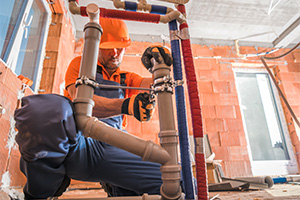 Introduction to Commercial Plumbing Contractors
Introduction to Commercial Plumbing Contractors
Commercial plumbing contractors play a pivotal role in maintaining the functionality and efficiency of plumbing systems in commercial properties. From office buildings to industrial facilities, these professionals are tasked with ensuring that plumbing infrastructure meets the demands of businesses while adhering to regulatory standards and safety protocols. In this section, we’ll explore the importance of selecting the right commercial plumbing contractor for your property.
Commercial plumbing contractors specialize in the installation, repair, and maintenance of plumbing systems in non-residential buildings. Unlike residential plumbing, which focuses on individual homes, commercial plumbing involves larger-scale projects that require specialized knowledge, equipment, and expertise. Whether it’s designing a new plumbing system for a commercial development or troubleshooting a complex issue in a high-rise building, commercial plumbers are equipped to handle a wide range of challenges.
Assessing Licensing and Credentials
One of the first steps in choosing a commercial plumbing contractor is to verify their licensing, credentials, and insurance coverage. Proper licensing ensures that the contractor has met the necessary qualifications and regulatory requirements to perform plumbing work in your area. It also provides a level of assurance that the contractor is committed to upholding industry standards and best practices.
In addition to licensing, it’s essential to inquire about certifications and professional affiliations that demonstrate a contractor’s expertise and commitment to ongoing education. Certifications from organizations such as the Plumbing-Heating-Cooling Contractors Association (PHCC) or the American Society of Plumbing Engineers (ASPE) indicate a dedication to staying current with industry trends and advancements.
Insurance coverage is another critical consideration when evaluating commercial plumbing contractors. Liability insurance protects both the contractor and the client in the event of property damage or injuries occurring during the course of the project. Workers’ compensation insurance provides coverage for employees in case of work-related injuries, ensuring that you’re not held liable for accidents that may occur on your property. By verifying licensing, credentials, and insurance coverage upfront, you can have confidence in the qualifications and professionalism of the commercial plumbing contractor you choose.
Experience and Expertise
When selecting a commercial plumbing contractor, experience and expertise are paramount considerations. Commercial plumbing projects often present unique challenges and complexities that require specialized knowledge and skills. In this section, we’ll delve into the importance of evaluating a contractor’s experience and expertise to ensure the successful completion of your project.
An experienced commercial plumbing contractor brings a wealth of knowledge and insights gained from years of working on diverse projects across various industries. They understand the intricacies of commercial plumbing systems, including complex piping configurations, large-scale installations, and regulatory requirements specific to commercial properties. Whether it’s troubleshooting a persistent issue or designing a custom plumbing solution, an experienced contractor can offer valuable expertise to meet your project’s needs.
When evaluating a contractor’s experience, consider factors such as the number of years in business, the breadth of project portfolio, and the types of commercial properties served. Look for evidence of past projects similar in scope and complexity to yours, as well as client references or testimonials that speak to the contractor’s reliability and professionalism. By choosing an experienced commercial plumbing contractor, you can have confidence in their ability to deliver quality workmanship and solutions tailored to your specific requirements.
Range of Services Offered
Commercial plumbing encompasses a wide range of services beyond traditional installation and repair tasks. From preventive maintenance to emergency response, a comprehensive suite of services is essential for maintaining the integrity and functionality of commercial plumbing systems. In this section, we’ll explore the importance of selecting a contractor that offers a diverse range of services to address your property’s needs.
A reputable commercial plumbing contractor should offer an array of services to support the full lifecycle of your plumbing system. This may include installation services for new construction or renovations, repair services for existing plumbing infrastructure, preventive maintenance programs to prolong system lifespan, and emergency response capabilities to address urgent issues promptly. Additionally, specialized services such as backflow prevention testing, water quality analysis, and energy-efficient upgrades may be offered to enhance system performance and compliance.
When evaluating a contractor’s range of services, consider your property’s specific needs and the level of support required to maintain optimal plumbing performance. Look for a contractor that can tailor their services to meet your unique requirements, whether you operate a small retail establishment or a large commercial complex. By choosing a contractor with a comprehensive service offering, you can streamline maintenance efforts, minimize downtime, and ensure the long-term reliability of your plumbing system.
Response Time and Availability
In the world of commercial plumbing, timely response and availability are critical factors that can make a significant difference in mitigating potential issues and minimizing disruptions to business operations. This section explores the importance of evaluating a contractor’s response time and availability when selecting a commercial plumbing partner for your property.
Plumbing emergencies can occur at any time, often without warning, and require immediate attention to prevent property damage, safety hazards, and operational downtime. Whether it’s a burst pipe, sewer backup, or major leak, a swift response from a commercial plumbing contractor is essential to address the issue effectively and minimize its impact on your property. Therefore, when choosing a contractor, inquire about their response time for emergency calls and their availability outside of regular business hours, including evenings, weekends, and holidays.
A reliable commercial plumbing contractor should offer 24/7 emergency services to ensure that assistance is readily available whenever plumbing issues arise. They should have protocols in place to dispatch qualified technicians promptly to assess the situation, implement temporary repairs if necessary, and develop a comprehensive plan to resolve the issue efficiently. By choosing a contractor with a commitment to rapid response and round-the-clock availability, you can have peace of mind knowing that your property is protected against unexpected plumbing emergencies.
Quality of Workmanship and Materials
The quality of workmanship and materials used in commercial plumbing projects can significantly impact the performance, durability, and longevity of the plumbing system. In this section, we’ll discuss the importance of prioritizing quality in both workmanship and materials when selecting a commercial plumbing contractor.
High-quality workmanship ensures that plumbing installations and repairs are completed to the highest standards of craftsmanship, minimizing the risk of issues such as leaks, malfunctions, and premature failures. Experienced and skilled technicians employ industry best practices and precision techniques to deliver superior results that meet or exceed regulatory requirements and manufacturer specifications. Additionally, attention to detail and thorough quality control measures during the installation or repair process contribute to the reliability and integrity of the plumbing system.
Equally important is the quality of materials used in commercial plumbing projects. From pipes and fittings to fixtures and valves, selecting durable and reliable materials is essential for ensuring the long-term performance and resilience of the plumbing system. High-quality materials resist corrosion, withstand heavy usage, and require less frequent maintenance and replacement, resulting in cost savings and reduced downtime for businesses. When evaluating a commercial plumbing contractor, inquire about the types of materials they use and ensure that they prioritize quality and durability in their selection.
Customer Service and Communication
Effective communication and outstanding customer service are hallmarks of a reputable commercial plumbing contractor. In this section, we’ll explore the importance of clear communication and responsive customer support throughout the project lifecycle.
Clear communication between the contractor and the client is essential for ensuring that expectations are understood, timelines are met, and potential issues are addressed promptly. A reliable contractor should maintain open lines of communication from project initiation to completion, keeping the client informed of progress, setbacks, and any changes to the scope or schedule. Regular updates, status reports, and timely responses to inquiries demonstrate a commitment to transparency and accountability, fostering trust and confidence in the contractor-client relationship.
Responsive customer service is another critical aspect of a positive experience with a commercial plumbing contractor. Whether it’s scheduling appointments, addressing concerns, or providing post-project support, prompt and courteous customer service enhances the overall experience for clients and reflects the contractor’s commitment to client satisfaction. A contractor that prioritizes customer service values client feedback, strives to exceed expectations, and is proactive in resolving issues to ensure a positive outcome for all parties involved.
Cost Transparency and Estimates
Transparent pricing and detailed cost estimates are essential elements of a successful commercial plumbing project. In this section, we’ll discuss the importance of cost transparency and provide guidance on evaluating cost estimates from potential contractors.
Transparent pricing ensures that clients understand the breakdown of costs associated with their plumbing project, including materials, labor, equipment, and any additional fees or charges. A reputable contractor should provide clear and upfront pricing information, avoiding hidden costs or surprises that could strain the client’s budget. By fostering transparency in pricing, contractors build trust and credibility with their clients, leading to more positive and productive working relationships.
Detailed cost estimates provide clients with a comprehensive overview of the expected expenses associated with their plumbing project. An accurate estimate should outline the scope of work, itemize costs for materials and labor, and include any relevant taxes or fees. Clients should review estimates carefully, seeking clarification on any unclear or ambiguous items and comparing estimates from multiple contractors to ensure competitiveness and fairness. By obtaining detailed cost estimates upfront, clients can make informed decisions and budget effectively for their plumbing project, minimizing the risk of cost overruns or financial surprises down the line.
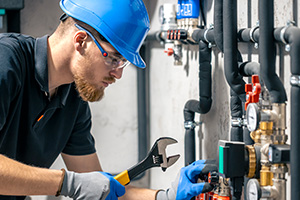 Introduction to Commercial Plumbing Repairs
Introduction to Commercial Plumbing Repairs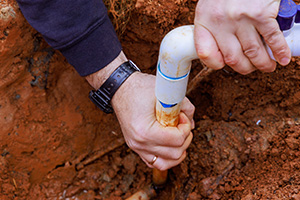 Introduction to Leak Detection
Introduction to Leak Detection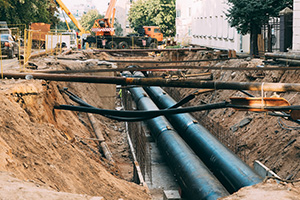 Introduction to Underground Pipe Location
Introduction to Underground Pipe Location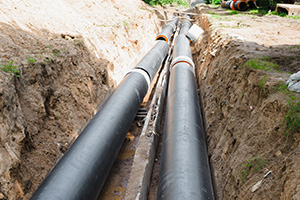 Introduction to Excavation Services
Introduction to Excavation Services